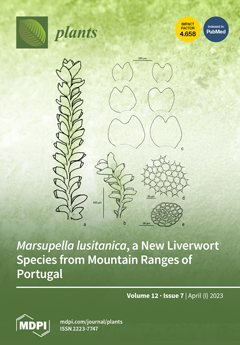This study aims to evaluate the in vitro cytotoxic and anti-migratory effects of
Marantodes pumilum Blume Kuntze plant extracts on prostate cancer cells, identify the active compound/s, and characterize their mechanism of action. The crude methanolic extract was partitioned into
n-hexane (MPh),
[...] Read more.
This study aims to evaluate the in vitro cytotoxic and anti-migratory effects of
Marantodes pumilum Blume Kuntze plant extracts on prostate cancer cells, identify the active compound/s, and characterize their mechanism of action. The crude methanolic extract was partitioned into
n-hexane (MPh), chloroform (MPc), and aqueous (MPa) extracts. Antiproliferative fractions (IC50 < 30 μg/mL based on SRB staining of LNCaP and PC3 cell lines) were further fractionated. Active compound/s were identified using spectroscopic methods. In vitro mechanistic studies on PC3 cells included: annexin V-FITC staining, mitochondrial membrane potential (MMP) depolarization measurements, the activity of caspases 3 and 7, nuclear DNA fragmentation, cell cycle analysis, modulation of Bax, Bcl-2, Smac/Diablo, Alox-5, VEGF-A, CXCR4, and CXCL12 mRNA gene expression via RT-PCR, 2D migration (scratch assay), and 3D invasion (Boyden chamber). MPc extract was the most active, inducing cell death (
p < 0.05) via apoptosis, as evidenced by nuclear DNA fragmentation and an increase in MMP depolarization (
p < 0.05) as well as the activation of caspases 3/7 (MPc
p < 0.01) in both PC3 and LNCaP cell lines. In addition, MPc upregulated Bax and Smac/DIABLO, downregulated Bcl-2 (
p < 0.05), and inhibited ALOX-5 mRNA gene expression (
p < 0.001). MPc was not cytotoxic against normal human fibroblast cells (HDFa) at the tested concentrations. Moreover, MPc inhibited migration and invasion of PC3 cells (
p < 0.01). These effects were accompanied by the downregulation of both VEGF-A and CXCL-12 gene expressions (
p < 0.001). A monounsaturated 5-alkyl resorcinol was isolated as the active compound in the MPc extract and identified as 5-henicosene-1-yl-resorcinol.
Full article






